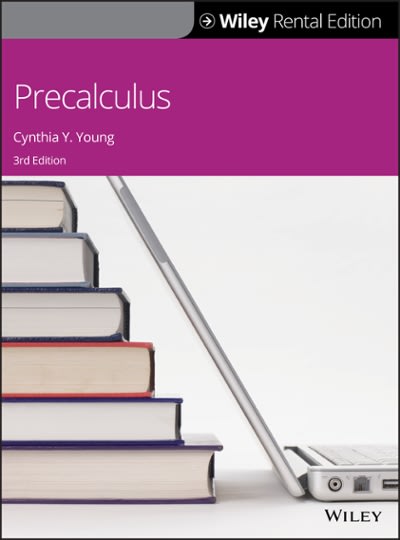Question
Statistics Tutors COMPUTE THE HARD QUESTIONS BELOW Part 1 Definition How likely is it? Anything that takes place over a long period of time, has
Statistics Tutors
COMPUTE THE HARD QUESTIONS BELOW
Part 1 Definition
How likely is it? Anything that takes place over a long period of time, has a short period of vulnerability.
Is there any chance of an occasion? An even is any collection of possible results from a hypothetical series of tests.
The conditions for disjoint or mutually exclusive events are at least two occurrences that cannot occur at the same time.
The second part.
an attachment with the designation of "easy" has been added
Let's start by evaluating
Question 1
The mechanism by which potassium enters is something I'd like to know about.
Cells, being under the impact of insulin, are active.
Here is the second question:
My clinic has seen an increase in the number of diabetics, who are typically seen in the primary care setting.
These individuals have higher fasting blood glucose measurements, but postprandial levels are within the normal range.
Someone with a body mass index (BMI) of twenty who is of an average build, is of normal weight, or is only slightly overweight Is this a sign of?
Could these individuals have insulin resistance? What is the rationale behind this phenomenon?
Concerning Question 3
Diabetes is diagnosed on the basis of more recent diagnostic criteria, such as the WHO 2007 guidelines.
glucose deficient?
"What is your dream job?"
It is suggested that diabetics perform a fasting glucose test, and the same method can be used to find out if someone has diabetes.
Should an eight-year-old child be diagnosed with diabetes?
Does it meet the performance requirements?
It can be used to diagnose diabetes, and it is used as a tool to help manage it.
euglycemic?
a seventh point raised
From what I've read in a book, for diabetics, random blood sugar levels are higher.
It is more significant than the fasting; on a medical website, I wrote that for a
a patient with type 2 diabetes, who has a fasting blood sugar level of 180 mg/dl or higher
Very important. What do you have to say?
150 mg/dL (5.5 mmol/L) for one or two days when someone has hypoglycemia or hypoglycemia unawareness?
In a patient of 60 years, an increase of 1.5 mmol/L above the maximum limit is acceptable.
and as a result, on oral medication?
Probing question 7
relevant for differentiating between type 2 diabetes, which blood sugar (fasting or random) is more relevant.
in terms of prognostication?
Eighth question:
When fasting and 2-hour blood glucose levels are checked, it is important to know if a diabetic is present.
The patient receiving oral antidiabetic medications that are 19 feet long?
The conclusions are as follows:
The following two methods are both fine and both accurate: fasting blood sugar and glycosylated hemoglobin
the HbA1C level serves as a guideline to change the dose of insulin or oral antidiabetic medication
without accounting for the postprandial values of 1 and 2 hours?
Please expand on question number 10
2 hours after eating, how much more is the 2-hour postprandial blood sugar level than normal
In the event that this value is raised, the dose of an oral antidiabetic medication should be increased.
despite dietary change, how many times has it exceeded?
Step by Step Solution
There are 3 Steps involved in it
Step: 1

Get Instant Access to Expert-Tailored Solutions
See step-by-step solutions with expert insights and AI powered tools for academic success
Step: 2

Step: 3

Ace Your Homework with AI
Get the answers you need in no time with our AI-driven, step-by-step assistance
Get Started


